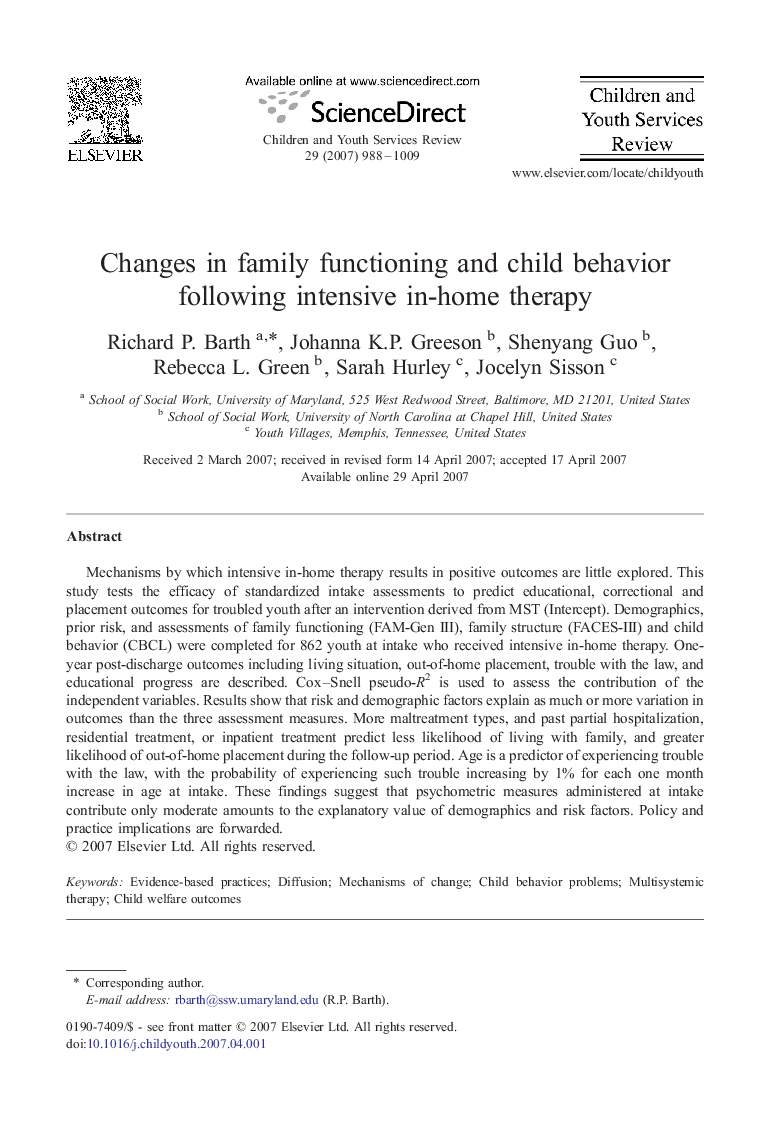| Article ID | Journal | Published Year | Pages | File Type |
|---|---|---|---|---|
| 347593 | Children and Youth Services Review | 2007 | 22 Pages |
Mechanisms by which intensive in-home therapy results in positive outcomes are little explored. This study tests the efficacy of standardized intake assessments to predict educational, correctional and placement outcomes for troubled youth after an intervention derived from MST (Intercept). Demographics, prior risk, and assessments of family functioning (FAM-Gen III), family structure (FACES-III) and child behavior (CBCL) were completed for 862 youth at intake who received intensive in-home therapy. One-year post-discharge outcomes including living situation, out-of-home placement, trouble with the law, and educational progress are described. Cox–Snell pseudo-R2 is used to assess the contribution of the independent variables. Results show that risk and demographic factors explain as much or more variation in outcomes than the three assessment measures. More maltreatment types, and past partial hospitalization, residential treatment, or inpatient treatment predict less likelihood of living with family, and greater likelihood of out-of-home placement during the follow-up period. Age is a predictor of experiencing trouble with the law, with the probability of experiencing such trouble increasing by 1% for each one month increase in age at intake. These findings suggest that psychometric measures administered at intake contribute only moderate amounts to the explanatory value of demographics and risk factors. Policy and practice implications are forwarded.
